Special Developments List (SDL)
General
What is the NANOSENSORS™ Special Developments List (SDL)?
The NANOSENSORS™ Special Developments List (SDL) is a showcase of NANOSENSORS™ AFM probe development capabilities made available to AFM customers with special application needs
Since its foundation in 1990 NANOSENSORS™, the technology leader in AFM probes, develops and manufactures innovative high quality AFM tips.
A dedicated R&D team works constantly on the development of new types of AFM probes and on the further improvement of the existing AFM probe technology.
You will see the results of NANOSENSORS™ Research Driven Excellence in our extensive scope of standard AFM probes for Atomic Force Microscopy .
But not all of the AFM tip developments that result in novel and innovative AFM probes make it into the standard list of products. In order to still make these AFM probes developments available to AFM users who are working on advanced non-standard AFM applications and require special non-standard AFM probes for this we have created the NANOSENSORS™ Special Developments List (SDL) .
The extraordinary AFM probes on this list are only available from NANOSENSORS™.
What about availability and pricing of NANOSENSORS™ Special Developments List AFM probes and other items?
Please keep in mind that the items on the NANOSENSORS™ Special Developments List are non-standard products.
Therefore, availability of a specific Special Development AFM probe and specifications are not guaranteed and may change, datasheets may not be available, prices may change, delivery times could be longer than usual and subsequent delivery may not be possible.
Prices and delivery time are available on request from NANOSENSORS™ distributors if there is a distributor available in your region. Otherwise, please contact NANOSENSORS™. For ordering, please make sure to use the codes starting with SD- that are mentioned in the NANOSENSORS™ Special Developments List.
We advise you to reconfirm availability with your local distributor or NANOSENSORS™ first before ordering a specific item.
How do I order AFM probes and other items from the NANOSENSORS™ Special Development List?
If there is an official NANOSENSORS™ distributor in your sales region then please contact this company to find out more about availability, pricing and delivery times.
If there is no NANOSENSORS™ distributor in your sales region then please contact us at info@nanosensors.com or sales@nanosensors.com for further information.
Does NANOSENSORS™ also offer custom-made AFM tips?
Generally, we at NANOSENSORS™ can make special custom-made AFM probes for you. However, depending on how far the intended AFM tip type deviates from our standard manufacturing process and the development time and effort involved this can become rather costly and time consuming.
This in turn can result in long delivery times and higher minimum order quantities. If you have something special in mind it is always best to check first in the NANOSENSORS™ Special Developments List to see if there is already an AFM probe type close or similar to what you had in mind.
Main Categories of AFM Probes and Other Items in the NANOSENSORS™ Special Developments List (SDL)
We regularly update the NANOSENSORS™ Special Developments List so we invite you to check the latest issue of the list to see what we might have added or changed since you had a look the last time.
If you don’t find the AFM tip for your needs in the SDL you are welcome to contact us at info@nanosensors.com .
We have divided the NANOSENSORS™ Special Developments into the categories listed below.
AFM cantilevers and material variations
- AFM cantilevers with extraordinary mechanical properties
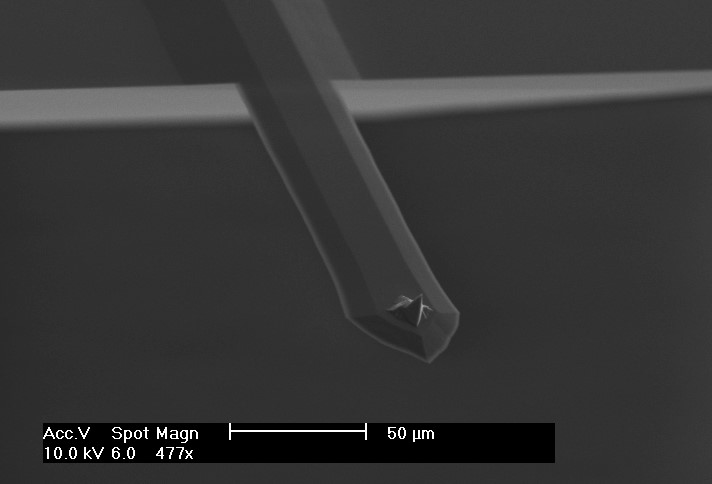
Sometimes the standard AFM probe resonance frequencies and force constants are not what it takes to make a specific experiment in Atomic Force Microscopy work.
For these occasions we have developed PointProbe® Plus (PPP) AFM Probes with extraordinary mechanical properties:
Three general types are available:
- Very soft AFM cantilevers with low resonance frequencies which can for example be used for the investigation of soft materials
- Very stiff AFM cantilevers with a very high force constant which can for example be used for applications as mentioned in the article “Multi-Channel Exploration of O Adatom on TiO2(110) Surface by Scanning Probe Microscopy” by Huan Fei Wen, Yasuhiro Sugawara and Yan Jun, Nanomaterials 2020, 10(8), 1506.
- AFM cantilevers with high frequencies such as the SD-NCVH with a typical resonance frequency of 1200 kHz
- Phosphorus doped PointProbe® Plus (PPP) AFM probes

AFM probes with a low phosphorus doping
- Low Q-factor / high Q-factor AFM probes
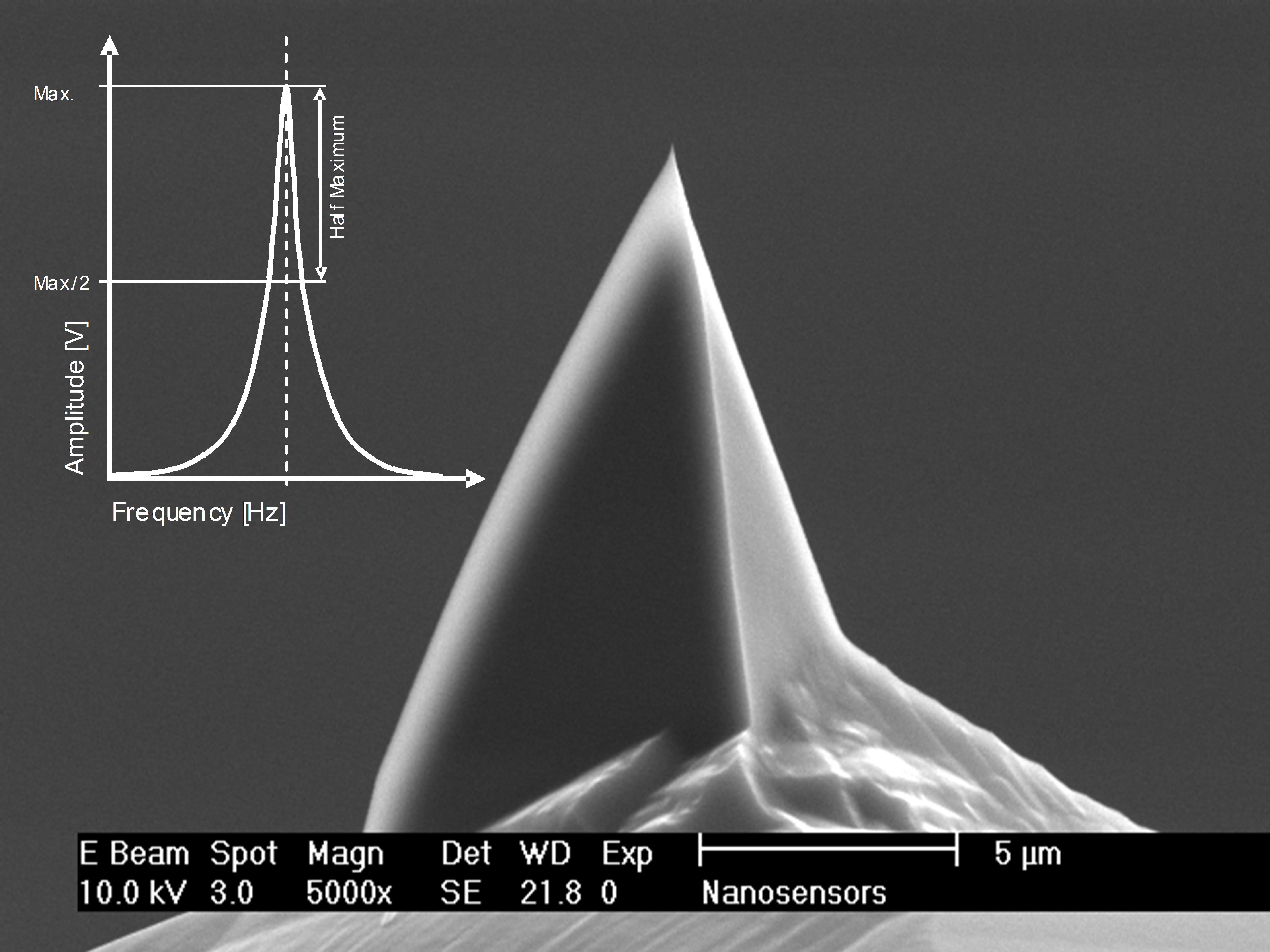
For some atomic force microscopy applications, for example applications in ultrahigh vacuum, it is best to use AFM probes with a very high Q-factor. Therefore the SDL offers AFM probes that have a Q-factor in UHV above 30’000.
There are other applications however, where an AFM probe with a very low Q-factor is necessary. As an answer to this the NANOSENSORS™ R&D team came up with an AFM probe with a typical Q-factor in UHV 2’000.
Special AFM probe coatings
- Different coating materials

AFM probes with aluminum coatings, platinum iridium coatings, gold coatings, diamond coatings and magnetic coatings are all part of the NANOSENSORS™ standards scope of products but sometimes an application needs a different coating material or the coating should have a different thickness than the coatings offered in the standard AFM probes range. In this section of the NANOSENSORS™ Special Developments List we give you some examples what else might be possible. Various coating materials, mostly metals, are possible. In some cases, it is also possible to coat the tip side and the detector facing side differently.
Have a look at this section of the NANOSENSORS SDL or contact us at info@nanosensors.com or sales@nanosensors.com to find out more.
- Partial coating of AFM cantilevers
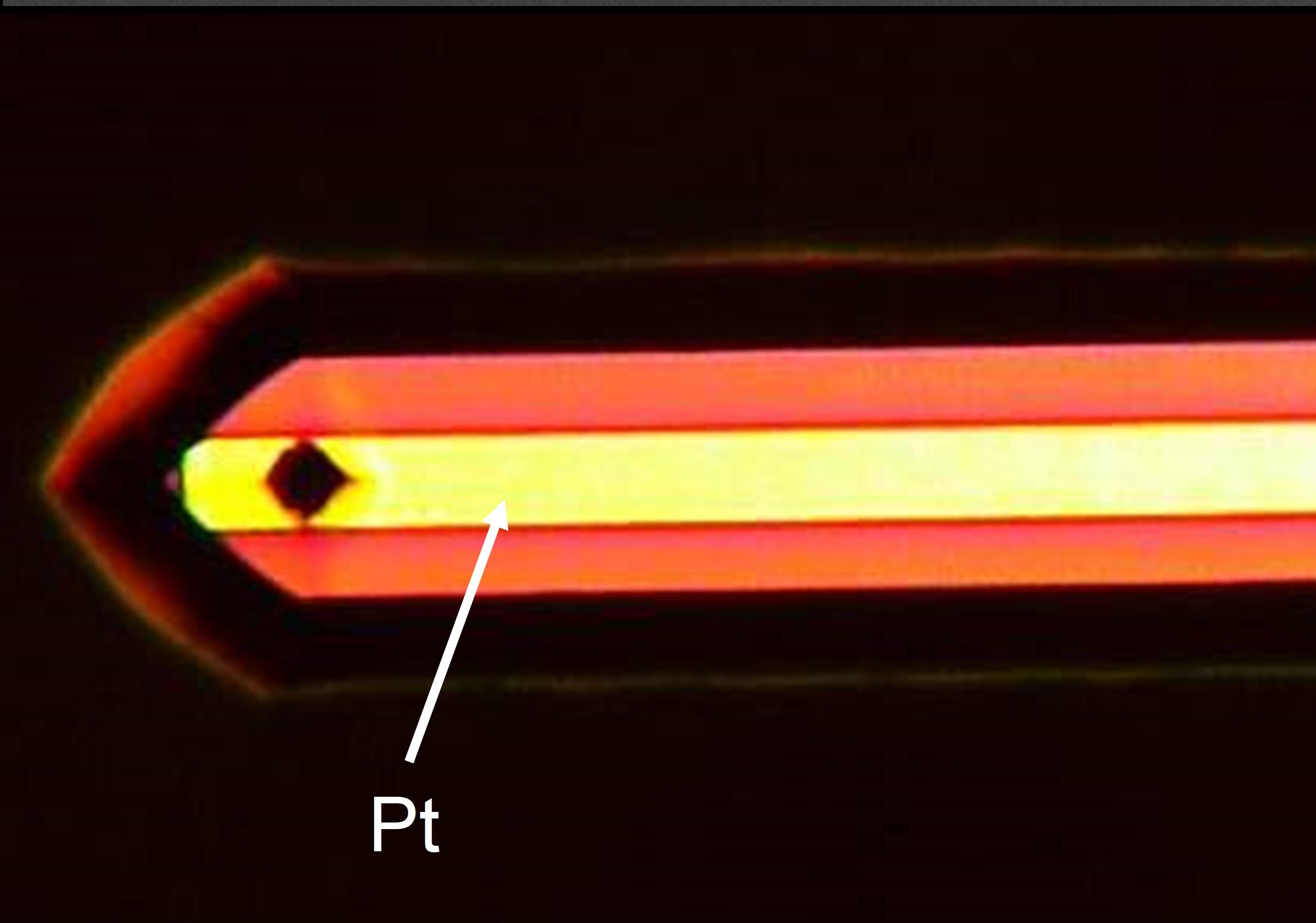
Another unique feature of the NANOSENSORS™ Special Developments List is that we can offer to coat some AFM cantilevers only partially.
- PointProbe® Plus (PPP) AFM probes with very thin silicon nitride layer
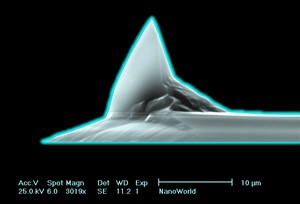
If you require an AFM probe that has the mechanical properties of a silicon AFM probe but that also has the surface properties of Silicon Nitride NANOSENSORS™ offers the possibility of coating silicon AFM probes with a very thin silicon nitride layer.
AFM tip modifications
- Biotool / Biotool XXL
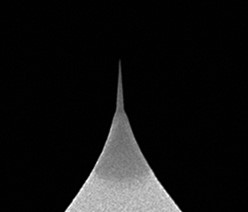
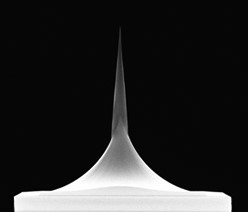
Do you need a very soft AFM probe with a low force constant but with a taller AFM tip than AFM tips for biological applications usually have? Then have a look at the Biotool and Biotool XXL AFM probes in the Special Developments List.
NANOSENSORS™ cooperates with nanotools GmbH Munich for these AFM tips and offers special modifications of its qp-BioAC AFM probes where a diamond like carbon spike is grown on the AFM tip of the qp-BioAC to increase the AFM tip height to adapt them for high topography biology and life science imaging.
- Carbon NanoTip
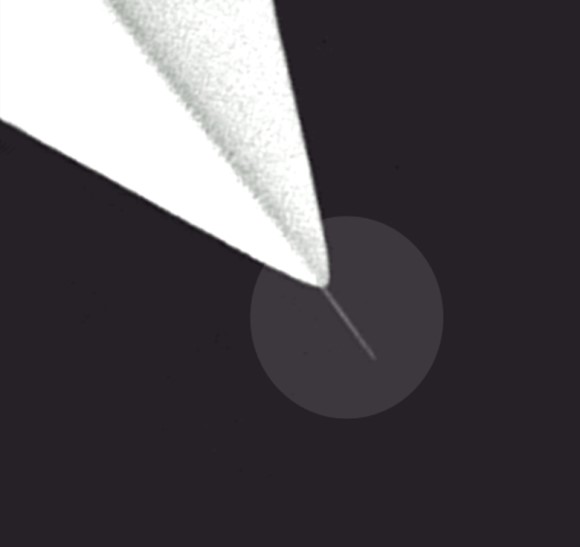
The Carbon NanoTip is another AFM probe solution by NANOSENSORS™ that was realized in cooperation with nanotools.
A short high density carbon spike of around 2nm AFM tip radius is grown on NANOSENSORS™ AFM probes creating a wear resistant high resolution AFM probe that offers very high resolution on flat surfaces.
- Extra tall AFM tips
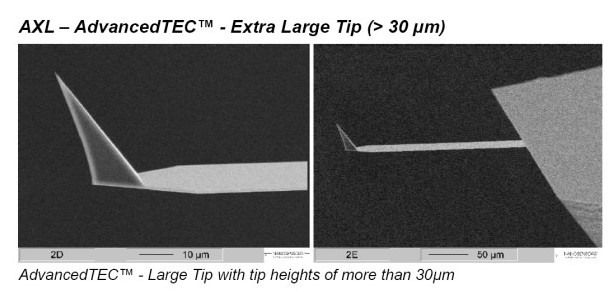
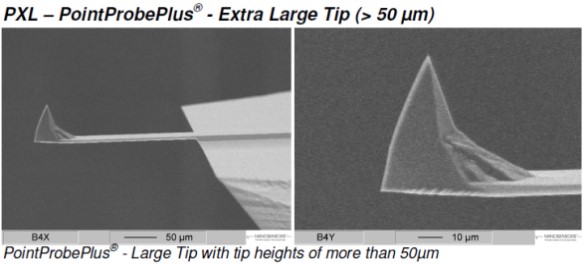
There are AFM applications where the AFM tip height of standard silicon AFM tips (10 - 15 µm ) is not enough, for example for some nanoprofiling applications.
For these applications the NANOSENSORS™ R&D department has come up with two extra tall versions of its PointProbe® Plus and AdvancedTEC™ AFM probes
- Extra Tall PointProbe® Plus AFM tips have a typical AFM tip height of 50-60 µm
- Extra Tall AdvancedTEC (ATEC) AFM tips have a typical AFM tip height of 30-40 µm
- Rounded AFM tips
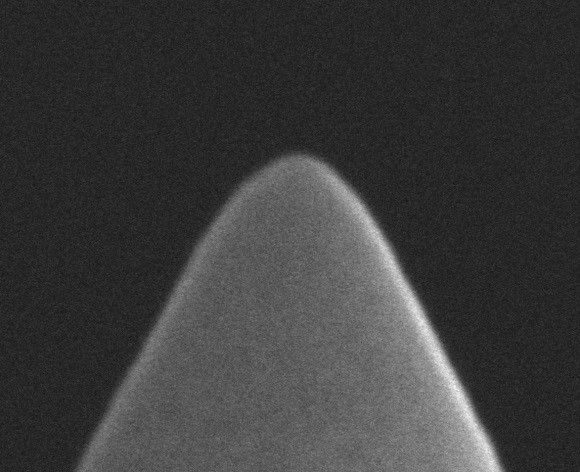

“Sharper” AFM tips with the smallest AFM tip radius possible are not always the best possible option. They are needed when a high resolution is required. But AFM probes with a small radius don’t always withstand strong forces very well and wear faster than AFM probes with a larger AFM tip radius.
There are applications where a very stable AFM probe is more important than a small AFM tips radius.
For those specific applications NANOSENSORS™ has developed several deliberately rounded AFM tips that are required by our users for applications in nanomechanical sensing, force sensing and other applications where the mechanical properties of membranes and many other materials are investigated.
The NANOSENSORS™ R&D department has developed two different types of round AFM tips:
- Rounded AFM tips R30 with a typical AFM tip radius of 30 nm (R30)
- Rounded AFM tips R150 with a typical AFM tip radius of 90 nm (from front) and 160 nm from the side (R150)
An application example for a R150 type (SD-R150-T3L450B) can be found on the NANOSENSORS blog.
- Sphere AFM tips
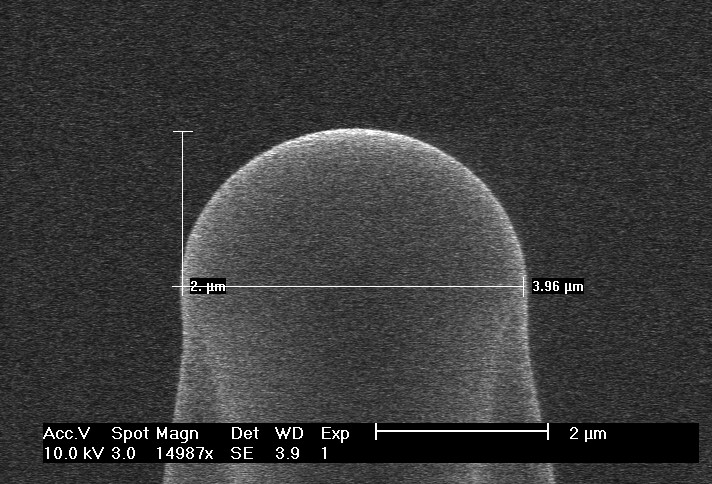
Colloidal AFM probes where a small sphere is glued on a tipless AFM cantilever are nowadays used for many applications mainly for nanomechanical measurements.
The disadvantage of this type of AFM probes is that sometimes, especially when very small glued spheres are used, the AFM cantilever can come too close to the investigated material and can interfere with the experiment.
NANOSENSORS™ Sphere AFM tips are grown on the end of a regular AFM tip. So even though the radius of the spheres is relatively small they are further removed from the AFM cantilever and the AFM cantilever has less chance of interfering with the sample.
The NANOSENSORS™ R&D department has developed Sphere AFM probes with three different Sphere diameters: 0.8 µm, 2.0 µm and 4.0 µm) that are available with three different AFM cantilever dimensions.
An application example (for SD-Sphere-NCH-S) can be found in the NANOSENSORS™ blog.
- Plateau AFM probes
NANOSENSORS™ has developed two different types of AFM probes with a plateau instead of a tapering tip at the apex. These kinds of AFM probes are for example used for microscale pressure tests when a well-defined flat top is pressed with a defined pressure onto the surface of a sample or when something should be attached to the surface of the plateau etc.
Plateau AFM tips with two different plateau sizes were developed:
- Large Plateau AFM Tips with a plateau diameter of 8-12 µm

- Plateau AFM Tips with a typical plateau diameter of 1.8 µm
Please note that the NANOSENSORS™ plateau tips are not tilt compensated. Depending on the mounting angle of the Atomic Force Microscope used in the experiments that plateau surface will not be perpendicular to the sample surface.
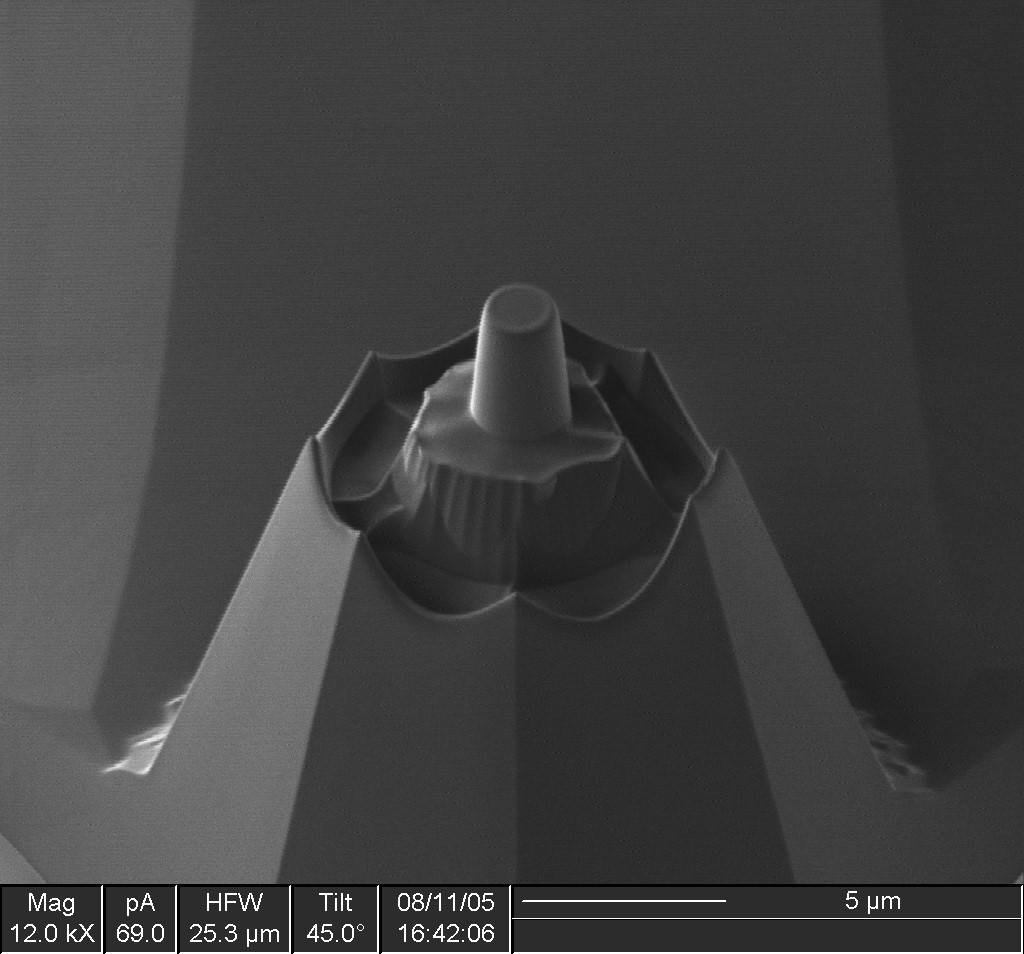
- Large Plateau AFM Tips with a plateau diameter of 8-12 µm
Ultra-short AFM cantilevers (for High Speed AFM)
High-speed atomic force microscopy (HS-AFM) makes it possible to study dynamic processes e.g. biomolecular processes. The NANOSENSORS™ R&D department has developed some types of AFM probes for HS-AFM and video-rate AFM made from different materials that have not been commercialized but that are exceptionally available via the NANOSENSORS™ Special Developments List (SDL).
- Ultra-short tipless AFM cantilevers
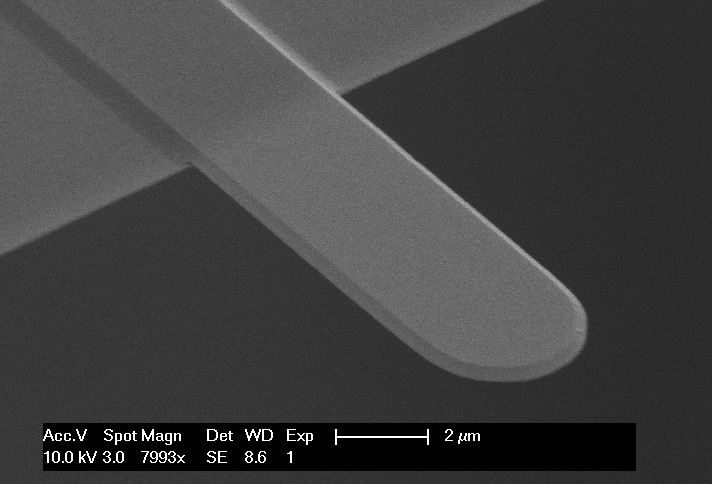
These tipless AFM cantilevers for high speed scanning are made from a quartz-like material. Various AFM cantilever types with resonance frequencies of up to 5 MHz are available.
- Ultra-short silicon nitride AFM cantilevers
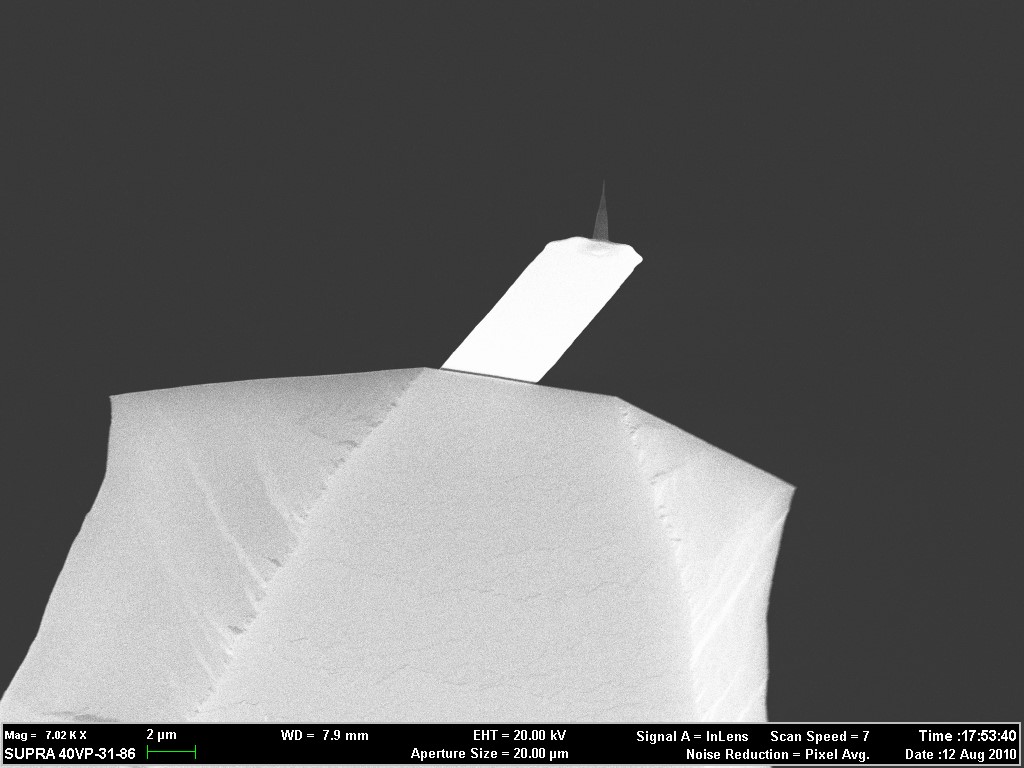
These AFM cantilevers for High-speed atomic force microscopy (HS-AFM) imaging were developed in collaboration with nanotools Munich/Germany and are made of silicon nitride with a wear resistant AFM tip made from high density carbon. Resonance frequencies of up to 6 MHz are possible
- High frequency AFM probes

These High Frequency AFM probes were also developed in cooperation with nanotools Munich/Germany. These AFM cantilevers are also made from Silicon Nitride and are a bit longer than the Ultra-Short Silicon Nitride AFM Cantilevers. They also have a wear-resistant high-density diamond-like carbon AFM tip. Further details on possible AFM cantilever version can be found on the NANOSENSORS™ Special Developments List (SDL).
Please note that not all commercially available Atomic Force Microscopes and Scanning Probe Microscopes can work with the above mentioned ultra-high frequency AFM cantilevers. Due to the small sizes of the AFM cantilevers and the high frequencies the used AFM instrument needs to have a relatively small laser spot and electronics that can work with the high frequencies of the AFM cantilevers. If you are not sure if you can use these AFM cantilevers in your system, please check back with us or with your AFM instrument manufacturer.
Special AFM probes
The NANOSENSORS™ R&D team has developed further miscellaneous AFM probes for various purposes.
- AdvancedTEC™ AFM probes with alignment grooves
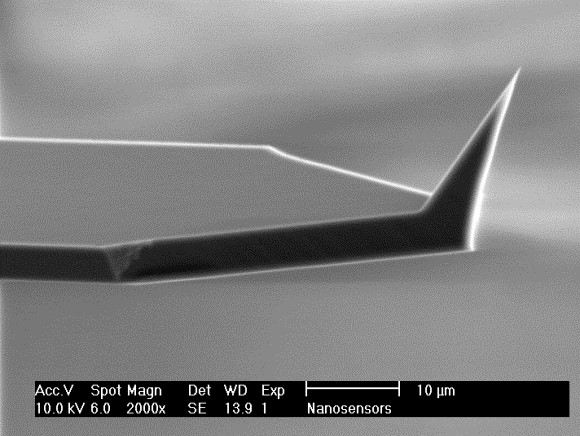
The standard AdvancedTEC™ do not have alignment grooves. NANOSENSORS™ has developed two special types of this AFM probe that have alignment grooves and can therefore be used in conjunction with the NANOSENSORS™ Alignment Chip.
- Hollow SiO2 AFM tip on silicon AFM cantilevers
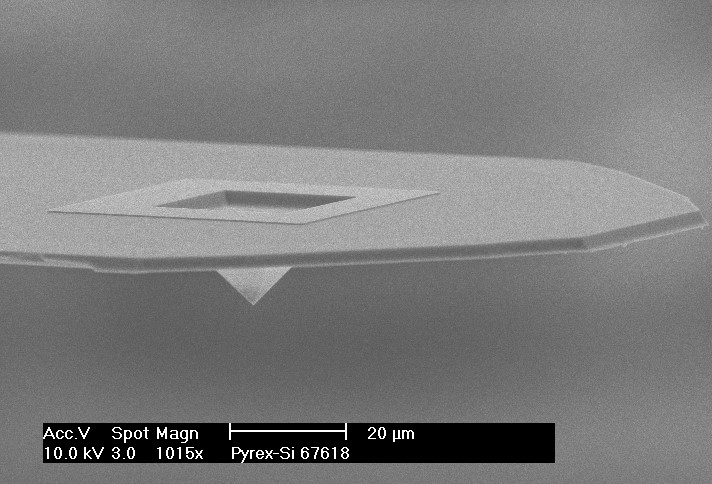
This special AFM probe was developed to be used as a basis for SNOM probes. Users drill the aperture holes in these AFM probes themselves in order to use them for SNOM applications. These AFM probes were developed for two different AFM cantilever types.
- Pierced cantilever AFM probes
These special tipless AFM cantilevers were developed with users, who want to make their own colloidal AFM probes in mind
he pierces cantilever AFM probes consist of one Silicon Support Chip with three different AFM cantilevers. At the end of each AFM cantilever there is a hole where you would usually find an AFM tip in standard AFM probes. This hole serves to facilitate the gluing of spheres on the AFM cantilever.
- uniqprobe tipless AFM cantilevers
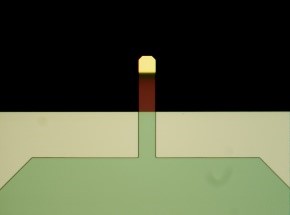
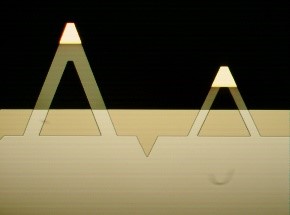
Due to their reduced thermal drift and very small variation in force constant values the standard NANOSENSORS™ Uniqprobe AFM probes are very popular for biology and life science applications.
Via the NANOSENSORS™ Special Developments List (SDL) NANOSENSORS™ offers tipless versions of three types of these Uniqprobes (SD-qp-BioT-TL, SD-qp-CONT-TL and SD-qp-SCONT-TL ) to users who for example want to glue spheres on these AFM cantilevers in order to make their own “unique colloidal AFM probes” for their nanomechanical studies or who want to use these tipless Uniqprobes to detect the nanomotion of various cell types.
An application example for the SD-qp-CONT-TL can be found on the NANOSENSORS™ blog.
- uniqprobe tipless AFM cantilever arrays
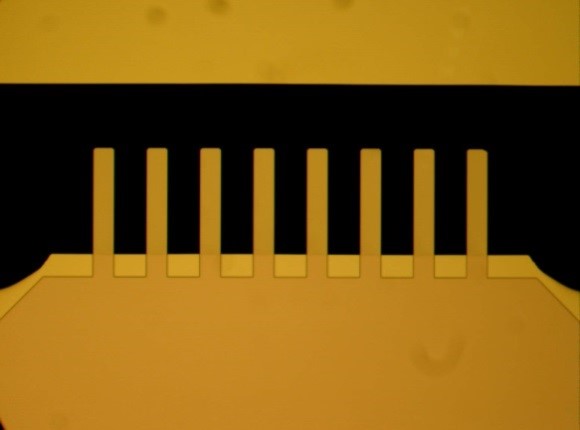
The NANOSENSORS™ R&D team has also developed two different types of tipless AFM cantilever arrays based on the uniqprobe technology. These AFM cantilever arrays can for example be used as the basis for nanomechanical sensors for cantilever-based sensing applications in physics, chemistry, biochemistry or medicine where uses will coat the AFM cantilevers with their own detection layers.
- MAC mode AFM cantilevers for Keysight / Agilent / Molecular Imaging Scanning Probe Microscopes

Even though Keysight has stopped manufacturing Atomic Force Microscopes you can still continue to operate your Magnetic AC mode (MAC Mode module) using the especially developed MAC Mode AFM cantilevers from NANOSENSORS™.
- Silicon nitride arrays with AFM tips ( NanoInk®, Inc compatible)
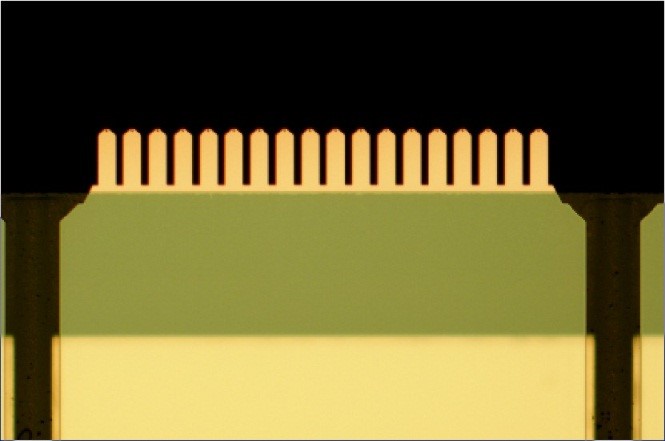
Do you still have a working NanoInk Instrument in your lab but you have run out of AFM cantilevers? On the NANOSENSORS™ Special Developments List (SDL) you can find three different types of Silicon Nitride AFM Cantilever Arrays with AFM tips ( multi-probe arrays, AFM tip arrays ) that are compatible with NanoInk® Instruments.
- nAmbition silicon nitride arrays
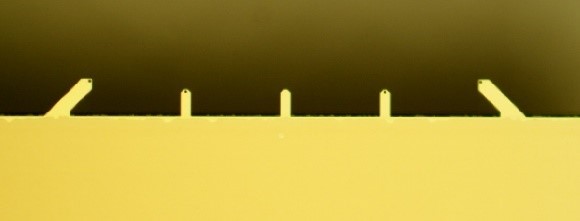
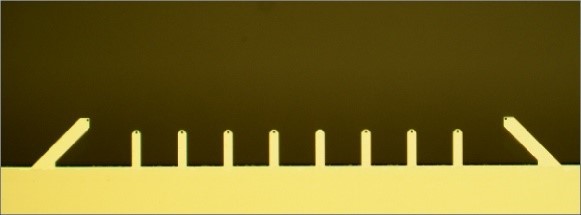
nAmbition, when it was active, was specialized on instruments and methods for nanobiotechnology and molecular biology. Do you have an old nAmbition instrument in your lab that is still in working order but you can’t get the silicon nitride arrays to operate it? Then you might have use for the two nAmbition compatible Silicon Nitride Arrays on the NANOSENSORS™ Special Developments List (SDL).
Diverse (AFM related)
- Alignment Chip
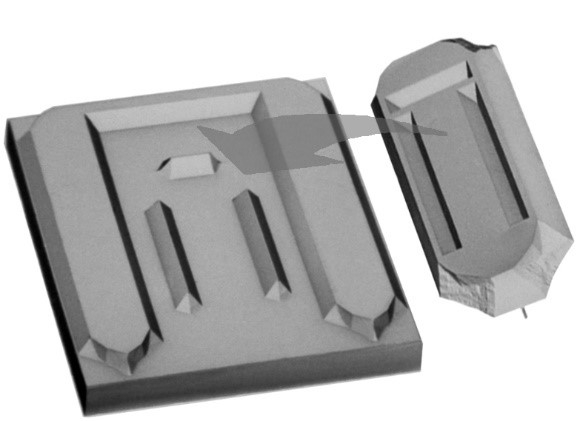
The NANOSENSORS™ Alignment Chip has three ridges that fit exactly into the corresponding alignment grooves at the support chip’s back of each of NANOSENSORS™ PointProbe® Plus and uniqprobe AFM probes. Due to this alignment mechanism the individual AFM probes of one type can be exchanged with precise repositioning of the AFM tip within +/- 2 µm when the Alignment Chip is built into the AFM head.
If the Alignment Chip is used together with the AFM probes of the PointProbe® Plus XY-Alignment Series AFM probe exchange time and effort will be reduced considerably because a readjustment of the beam deflection laser is no longer required even when AFM probes with different AFM cantilever properties from this series are used.
Besides the values for Alignment Chip in the NANOSENSORS™ Special Developments List (SDL) you can find additional information when you have a look at the NANOSENSORS™PointProbe® Plus Alignment Series brochure or the NANOSENSORS™ XY-Alignment Series video on the NANOSENSORS™ Youtube channel.
- 2D200 pitch grating
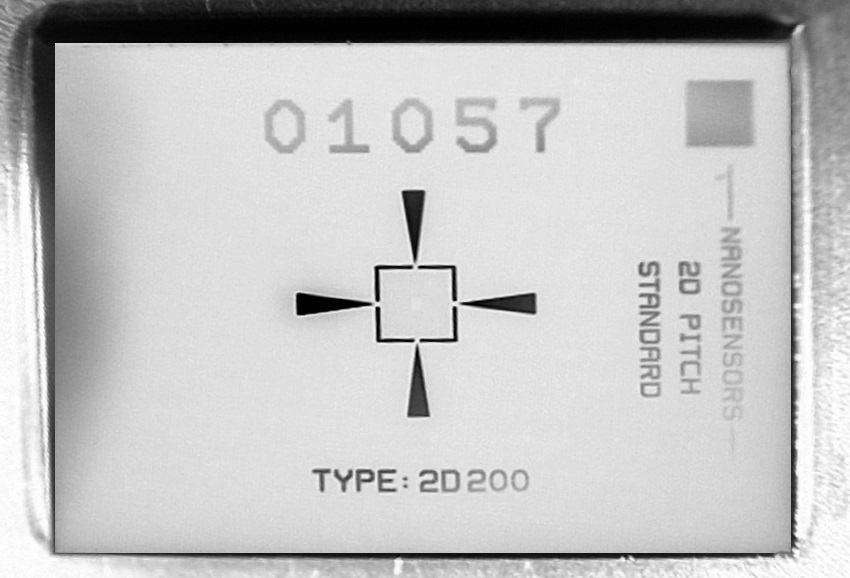
The 2 dimensional lateral (xy) grating 2D200 is used for a very precise x-y calibration of the scanning mechanism of a scanning probe microscope or atomic force microscope The 2D200 consist of 2-dimensional lattices of inverted square pyramids with 200 nm pitch, etched into a silicon chip.
- 2D300 pitch grating
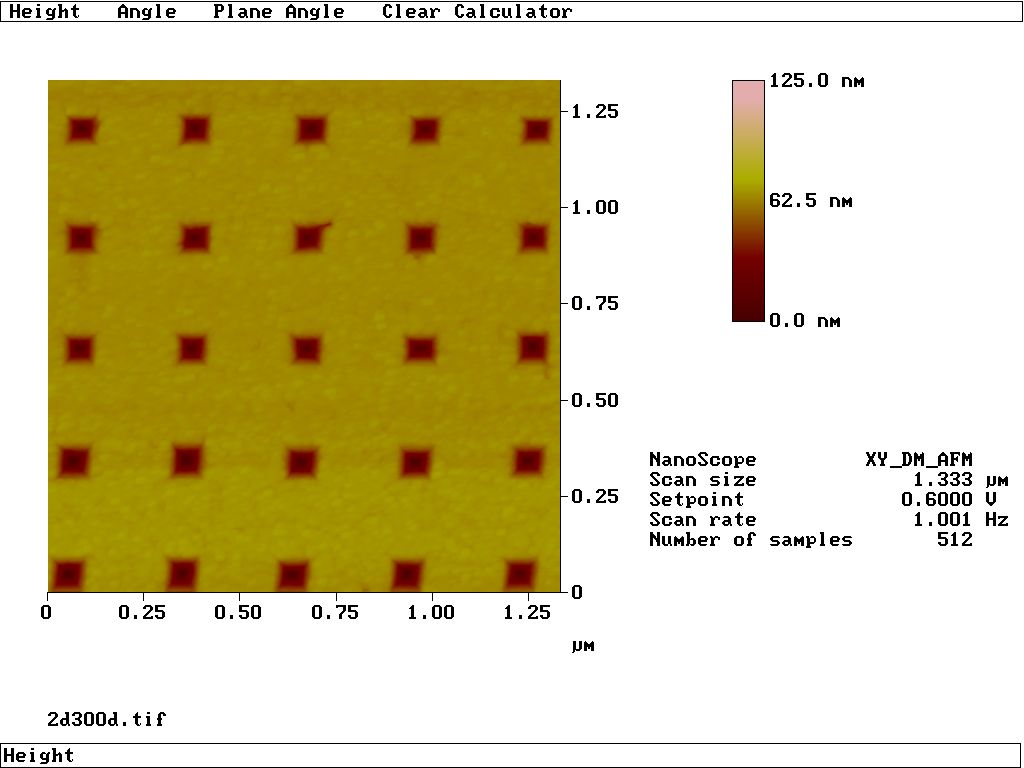
The 2 dimensional lateral (xy) grating 2D300 is used for a very precise x-y calibration of the scanning mechanism of a scanning probe microscope or atomic force microscope The 2D300 consist of 2-dimensional lattices of inverted square pyramids with 300 nm pitch, etched into a silicon chip.
- CalibLever reference sample
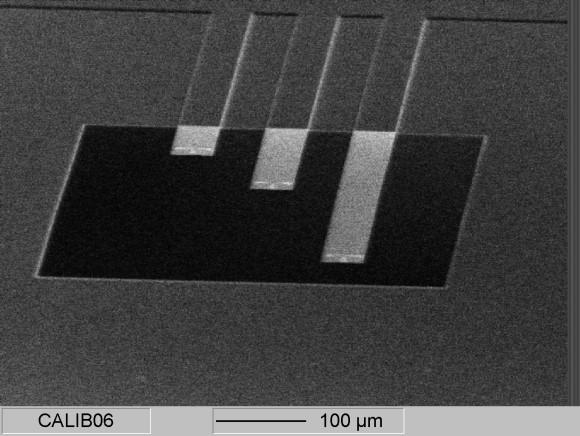
The CalibLever reference samples are designed for the determination of force constants. They consist of 3 AFM cantilevers of well characterized geometry. An especially designed reference mark close the free end of the AFM cantilever defines the measurement position. This mark is clearly visible by means of an optical microscope or by an AFM measurement.
- Quartz tuning fork (SD TF)

Optionally available mounted on a ceramic plate (SD-QTFM).
- Spring Constant Calibrated AFM Cantilevers
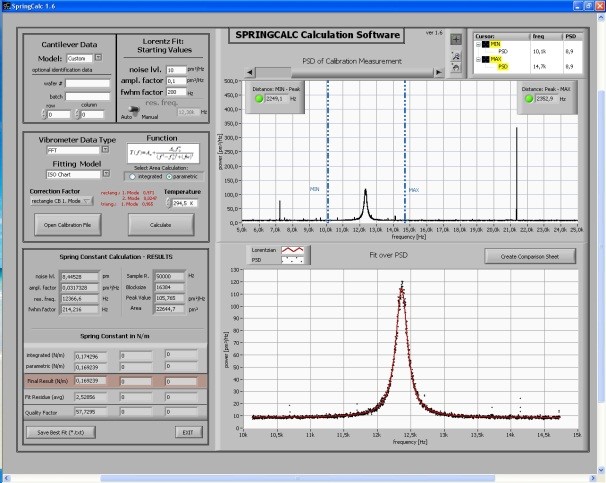
Determination of the mechanical properties of AFM cantilevers by Laser Doppler Vibrometry. This service can be ordered as add-on to any AFM probe type having a Force Constant < 100 N/m and provides measured Spring Constants, Resonance Frequencies and Quality Factors.
- Stainless steel AFM probes box (Gel free)
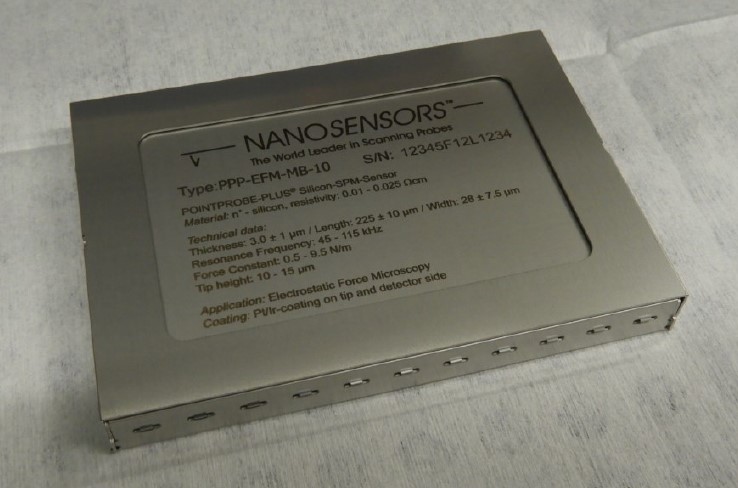
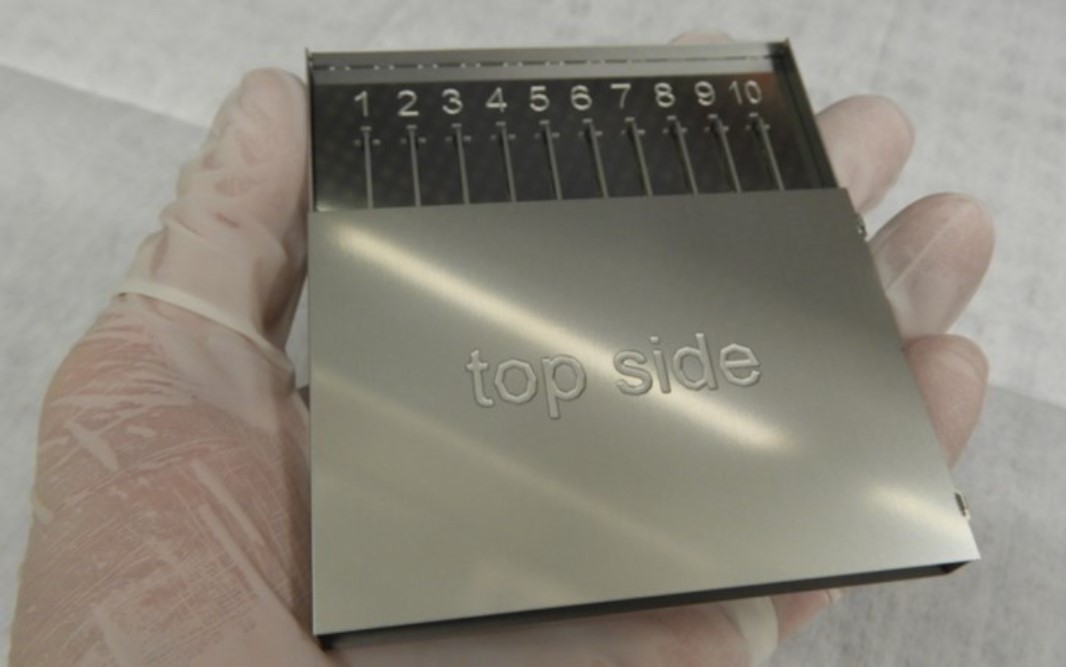
The NANOSENSORS™ stainless steel AFM probe transport boxes are fabricated solely from stainless steel avoiding the usage of adhesion gel and plastics. Therefore, these boxes are especially suited for applications that are extremely sensitive to organic molecules such as tip enhanced infra-red spectroscopy. Each box has a capacity of 10 AFM probes that are individually fixed by a movable clamp. These boxes are only available as an add-on together with the purchase of certain NANOSENSORS™ AFM probes.
Nanomechanical sensors
- Membrane-type surface-stress sensor (SD-MSS)
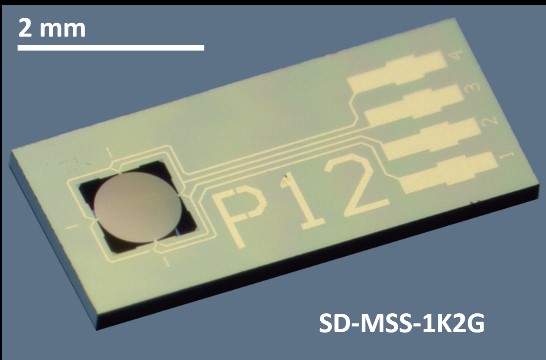
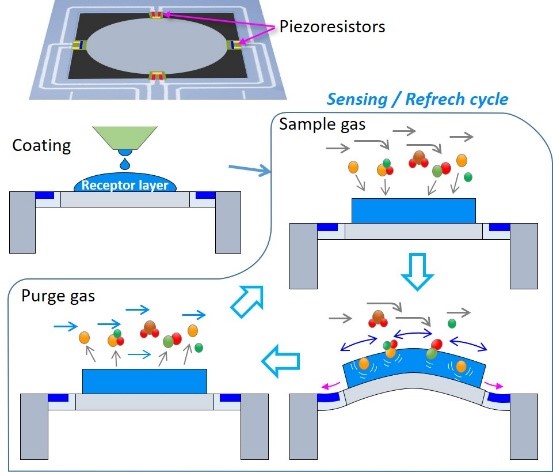
NANOSENSORS™ MSS (Membrane Type Surface Stress Sensors) are dedicated to R&D in the areas of olfactory sensing and electronic noses.
They provide the bare silicon membrane platform which researchers can coat with their own detection layers for use in the R&D in the field of olfactory sensing.
An application example can be found in the NANOSENSORS™ blog.
Further types of the MSS can be used for Torque Magnetometry. An application example for MSS in torque magnetometry can be found in the NANOSENSORS™ blog . Further information can be found on the dedicated NANOSENSORS™ MSS website and in the MSS Video in the NANOSENSORS™ Youtube channel.

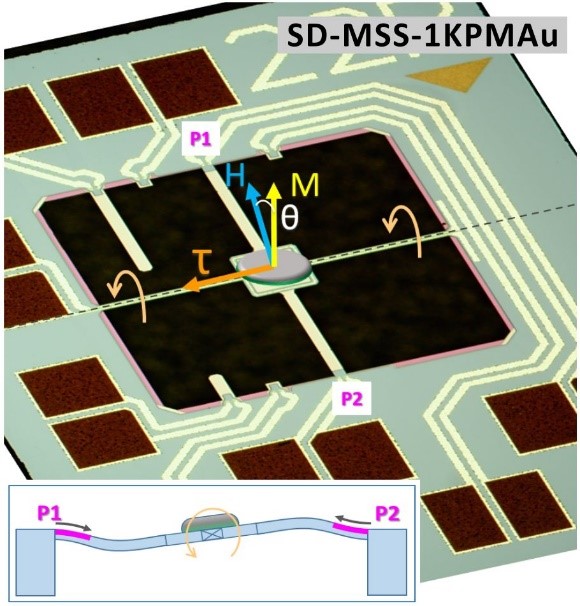
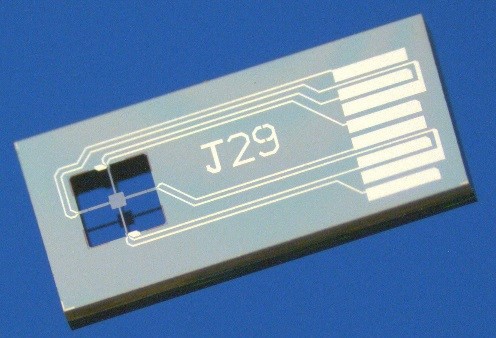
- MSS 8 channel readout module (SD-MSS-8RM)
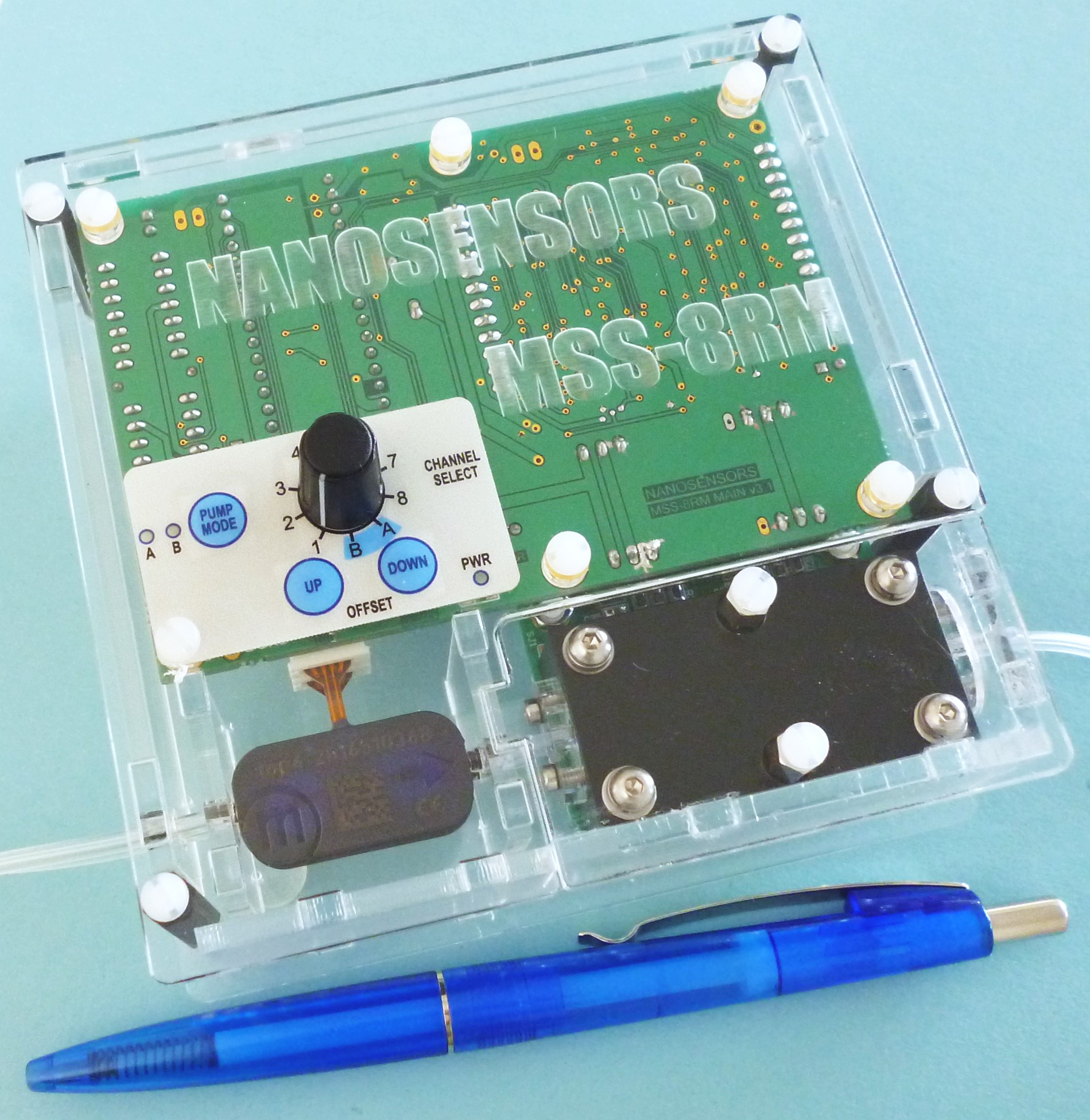
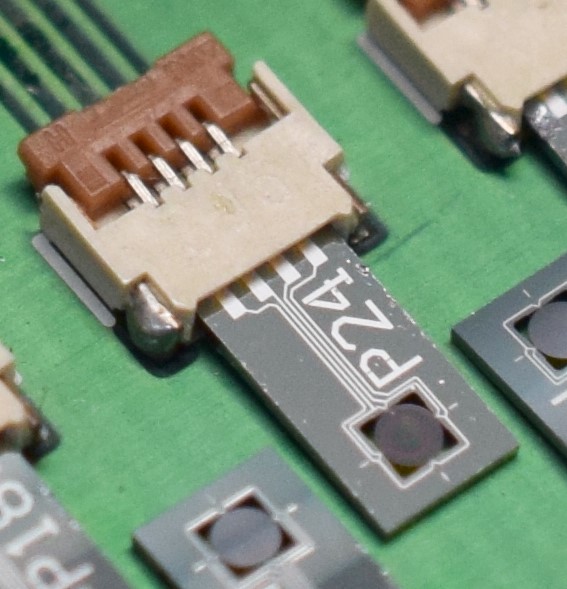

The MSS 8 channel readout module (MSS-8RM) is a basic electronic module to operate and to readout NANOSENSORS™ MSS, up to 8 sensors simultaneously, under a hardware configuration for electronic-nose sensing.
It is not a finished sensing instrument. It was developed to support researchers in the field of smell sensing etc. so that they don’t have to build up the whole MSS experiment from scratch but can integrate the MSS-8RM into their own setup. The MSS-8RM contains two air pumps and users will coat the MSS with their own detection layers before they examine MSS (compatible: SD-MSS-1K and SD-MSS-1K2G) under different gas flow conditions.
The MSS-8RM does not include any data processing functions to distringuish one sample from another. Users will get raw numerical data of the sensors responses under different conditions as final output. Please have a look at the MSS website for further information.





